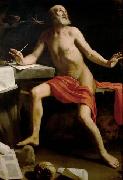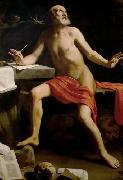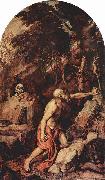Wholesale Oil Painting No Minimum |
|||||||||||
|
|
|||||||||||

|
|||||||||||
|
|
|
||||||||
CAGNACCI, GuidoItalian Baroque Era Painter, 1601-1681 |
||||||||
|
|
||||||||
Hl. Hieronymus
Hl. Hieronymus Painting ID:: 68400 |
Technique Oil on canvas Technique Oil on canvas |
|||||||
|
|
||||||||
CAGNACCI, GuidoItalian Baroque Era Painter, 1601-1681 |
||||||||
|
|
||||||||
|
|
Hl. Hieronymus
Hl. Hieronymus Painting ID:: 73536 |
Date Deutsch: nach 1659
Medium Oil on canvas
Dimensions Deutsch: 160 x 110,5 cm Rahmenmaße: 178,2 x 130 x 7 cm
cyf Date Deutsch: nach 1659 Medium Oil on canvas Dimensions Deutsch: 160 x 110,5 cm Rahmenmaße: 178,2 x 130 x 7 cm cyf |
||||||
|
|
||||||||
Francisco de Zurbaran1598-1664 Spanish Francisco de Zurbaran Galleries Spanish baroque painter, active mainly at Llerena, Madrid, and Seville. He worked mostly for ecclesiastical patrons. His early paintings, including Crucifixion (1627; Art Inst., Chicago), St. Michael (Metropolitan Mus.), and St. Francis (City Art Museum, St. Louis), often suggest the austere simplicity of wooden sculpture. The figures, placed close to the picture surface, are strongly modeled in dramatic light against dark backgrounds, indicating the influence of Caravaggio. They were clearly painted as altarpieces or devotional objects. In the 1630s the realistic style seen in his famous Apotheosis of St. Thomas Aquinas (1631; Seville) yields to a more mystical expression in works such as the Adoration of the Shepherds (1638; Grenoble); in this decade he was influenced by Ribera figural types and rapid brushwork. While in Seville, Zurbur??n was clearly influenced by Velazquez. After c.1640 the simple power of Zurbaran work lessened as Murillo influence on his painting increased (e.g., Virgin and Child with St. John, Fine Arts Gall., San Diego, Calif.). There are works by Zurbar??n in the Hispanic Society of America, New York City; the National Gallery, Washington, D.C.; and the Philadelphia Museum of Art.. |
||||||||
|
|
||||||||
|
|
Hl. Hieronymus
Hl. Hieronymus Painting ID:: 83294 |
c. 1640
Medium Oil on canvas
Dimensions Deutsch: 185 x 103 cm
cjr c. 1640 Medium Oil on canvas Dimensions Deutsch: 185 x 103 cm cjr |
||||||
|
|
||||||||
TitianItalian High Renaissance Painter, ca.1485-1576 Italian painter active in Venice. As a young man he was taught by the Bellini family and worked closely with Giorgione. His early works are so similar in style to Giorgione's as to be indistinguishable, but soon after Giorgione's early death Titian established himself as the leading painter of the Republic of Venice. Among his most important religious paintings is the revolutionary and monumental Assumption (1516 ?C 18) for Santa Maria dei Frari, in which the Virgin ascends to heaven in a blaze of colour accompanied by a semicircle of angels. Titian was also interested in mythological themes, and his many depictions of Venus display his work's sheer beauty and inherent eroticism. Bacchus and Ariadne (1520 ?C 23), with its pagan abandon, is one of the greatest works of Renaissance art. Titian was sought after for his psychologically penetrating portraits, which include portrayals of leading Italian aristocrats, religious figures, and Emperor Charles V. He reached the height of his powers in The Rape of Europa (c. 1559 ?C 62), one of several paintings done for Philip II of Spain. He was recognized as supremely gifted in his lifetime, and his reputation has never declined. |
||||||||
|
|
||||||||
|
|
Hl. Hieronymus
Hl. Hieronymus Painting ID:: 88933 |
c. 1552
Medium Oil on canvas
Dimensions Deutsch: 235 x 125 cm
cjr c. 1552 Medium Oil on canvas Dimensions Deutsch: 235 x 125 cm cjr |
||||||
|
|
||||||||
|
Titian Italian High Renaissance Painter, ca.1485-1576 Italian painter active in Venice. As a young man he was taught by the Bellini family and worked closely with Giorgione. His early works are so similar in style to Giorgione's as to be indistinguishable, but soon after Giorgione's early death Titian established himself as the leading painter of the Republic of Venice. Among his most important religious paintings is the revolutionary and monumental Assumption (1516 ?C 18) for Santa Maria dei Frari, in which the Virgin ascends to heaven in a blaze of colour accompanied by a semicircle of angels. Titian was also interested in mythological themes, and his many depictions of Venus display his work's sheer beauty and inherent eroticism. Bacchus and Ariadne (1520 ?C 23), with its pagan abandon, is one of the greatest works of Renaissance art. Titian was sought after for his psychologically penetrating portraits, which include portrayals of leading Italian aristocrats, religious figures, and Emperor Charles V. He reached the height of his powers in The Rape of Europa (c. 1559 ?C 62), one of several paintings done for Philip II of Spain. He was recognized as supremely gifted in his lifetime, and his reputation has never declined. Hl. Hieronymus c. 1552 Medium Oil on canvas Dimensions Deutsch: 235 x 125 cm cjr |
||||||||
|
|
||||||||
|
Prev Next
|
||||||||
|
|
||||||||
|
Related Paintings to Titian :. |
||||||||
|
|
||||||||
|
CONTACT US |




